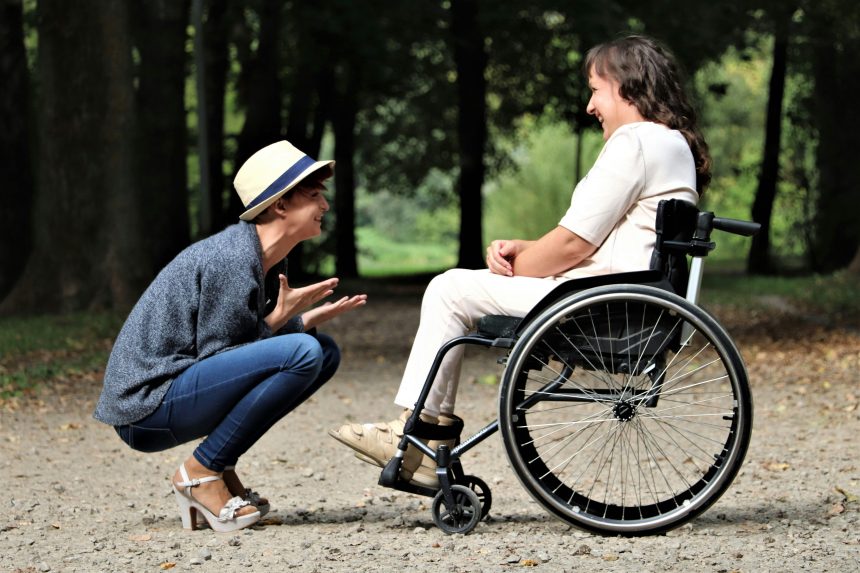Living with a brain injury often means adjusting to a “new normal.” Daily routines, social interactions, and personal goals may look very different from life before the injury. Survivors frequently describe recovery as relearning how to live, one step at a time.
Although the challenges are real, they are not insurmountable. With the right strategies, rehabilitation support, assistive technology, and community resources, many survivors regain independence and build meaningful lives after brain injury.
Everyday Challenges After Brain Injury
The brain controls nearly every aspect of daily life, so even minor injuries can disrupt routine tasks. Survivors may experience:
- Fatigue — sudden exhaustion, even after light activity or short conversations.
- Cognitive difficulties — memory lapses, slower thinking, or trouble planning and organizing.
- Physical limitations — weakness, balance issues, vision changes, or reliance on mobility aids.
- Communication struggles — difficulty expressing thoughts or following conversations.
- Emotional and behavioral changes — irritability, frustration, or withdrawal from social life.
- Sensory sensitivities — loud environments, bright lights, or crowded spaces may feel overwhelming.
These symptoms often overlap and fluctuate day to day, making consistency and flexibility equally important.
Structuring a New Daily Routine
Consistency is one of the most powerful tools for recovery. Many survivors benefit from:
- Predictable schedules: Waking, eating, exercising, and resting at the same times each day.
- Task breakdown: Dividing larger tasks into smaller, manageable steps.
- Reminders and cues: Using smartphone alarms, sticky notes, or digital calendars.
- Energy pacing: Alternating activity with rest to prevent fatigue.
Occupational therapists often help survivors build customized routines, gradually increasing complexity as skills improve.
See Coping Strategies & Mental Health for ways to handle the stress of adapting to new routines.
Household Responsibilities
Managing a household after brain injury may feel overwhelming at first. Practical adaptations include:
- Cooking: Preparing simple meals, using visual recipes, or batch cooking with family support. Adaptive kitchen tools—lightweight pans, electric can openers, rocker knives—make tasks safer and easier.
- Cleaning: Breaking chores into 10–15 minute sessions, using ergonomic cleaning tools, or hiring periodic cleaning support.
- Shopping: Creating grocery lists with apps, using online delivery, or shopping during quieter hours to avoid sensory overload.
- Finances: Setting up automatic bill payments, budgeting with apps, or designating a trusted family member to oversee finances.
Assistive tools like pill organizers, smart speakers, and reminder apps can make daily responsibilities more manageable. See Assistive Technology for Brain Injury.
Work, School, and Productivity at Home
Not everyone returns to their pre-injury job or classroom immediately, but meaningful productivity remains vital for recovery. Examples include:
- Modified work schedules: Part-time hours or remote work options.
- Vocational rehabilitation programs: Training for new careers or adjusting old roles.
- School accommodations: Extended time for assignments, note-taking assistance, or quiet testing environments.
- At-home productivity: Crafts, journaling, puzzles, reading, or volunteering.
For details, see Return to Work & School After Brain Injury.
Social and Emotional Adjustments
Daily life is not only about tasks—it is also about relationships and identity. Survivors may face:
- Struggles reconnecting with friends due to communication changes.
- Feelings of isolation if symptoms are “invisible” to others.
- Frustration when progress is slower than expected.
Helpful supports include:
- Peer support groups with other survivors.
- Counseling or therapy for depression, anxiety, or grief.
- Family education programs to improve understanding and reduce conflict.
See Coping Strategies & Mental Health After Brain Injury for more.
Role of Caregivers in Daily Life
Caregivers often provide essential help with routines—reminding about medications, providing transportation, or assisting with mobility. However, this responsibility can be exhausting and emotionally taxing.
Families benefit from:
- Respite care services that give caregivers breaks.
- Support groups for emotional connection and advice.
- Training programs that teach safe transfer techniques, communication skills, and stress management.
Learn more in Family and Caregiver Support.
Community Participation and Independence
Recovery is not only about survival—it is about reintegration. Survivors may gradually return to:
- Community activities: Religious services, clubs, or adaptive sports.
- Leisure: Gardening, music, art, or social outings.
- Advocacy: Many survivors find purpose in raising awareness or supporting others with brain injuries.
Housing decisions also shape independence. Options range from independent living to supported housing or assisted care. See Living Options After Brain Injury.
Technology in Daily Living
Technology continues to expand independence for survivors:
- Smartphones and tablets: Reminders, GPS, and note-taking apps.
- Smart home devices: Voice-activated controls for lights, appliances, and security.
- Communication aids: Text-to-speech apps for those with speech impairments.
- Adaptive vehicles: Hand controls, modified seating, or ride services.
See Assistive Technology for Brain Injury.
Long-Term Adaptations
Living with a brain injury is not just about the first year—it’s about building sustainable routines for the long haul. Survivors often:
- Relearn skills over time with ongoing therapy.
- Adjust goals to match changing abilities.
- Continue to face new challenges, like aging with a brain injury.
- Develop resilience by celebrating milestones and focusing on progress rather than perfection.
Conclusion
Daily life after a brain injury is a journey of adaptation. Survivors may struggle with fatigue, memory, mobility, or emotions, but structured routines, rehabilitation, technology, and strong caregiver support make independence possible.
Every day may bring challenges, but with the right strategies and resources, survivors can rediscover purpose and live fulfilling lives beyond their injury.







